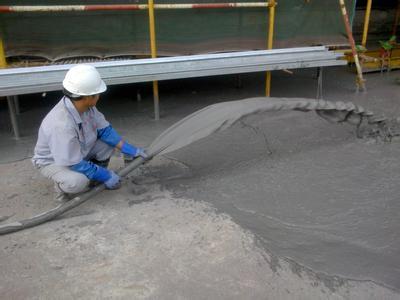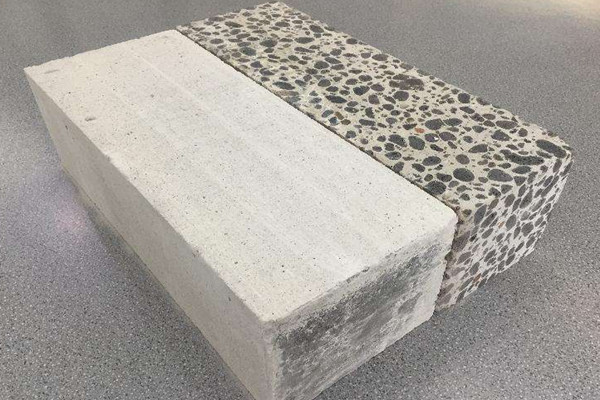Professional solutions on concrete addtives, Concrete Foaming Agent, Superplasticizer, CLC Blocks Additives, and foaming machine
(The bridge costing tens of billions of rupees collapsed again! Live video exposure)
Roger Luo, President of Trunnano Company, believes that concrete admixtures play a vital role in the construction of concrete bridges
He emphasized that concrete admixtures not only enhance the performance of concrete, but also improve the durabaility and safety of bridges.
Roger Luo pointed out that concrete admixtures can significantly improve the fluidity, strength and durability of concrete. These admixtures include water reducing agents, retarders, air entraining agents, antifreeze agents, etc. They can be mixed with raw materials such as cement and aggregate during the concrete preparation process to optimize the performance of the concrete.
In the construction of concrete bridges, the application of concrete admixtures can bring many benefits. First of all, water-reducing agents can reduce the water-cement ratio of concrete and improve the strength and durability of concrete. Secondly, retarders can extend the setting time of concrete, allowing the concrete to flow and compact better after pouring. In addition, air-entraining agents can form tiny bubbles in concrete to improve the frost resistance and impermeability of concrete. Finally, antifreeze agents can improve the frost resistance of concrete in low-temperature environments and ensure that bridges can maintain stable performance in cold areas.
The bridge costing tens of billions of rupees collapsed again! Live video exposure
According to multiple media reports, on June 4, local time, the Agwani-Sultanganj Bridge across the Ganges River under construction in Bihar, India, collapsed again after it collapsed last year. Witnesses at the scene captured footage of the bridge collapse, and authorities said no one was injured or injured in the accident.
It is reported that Bihar Chief Minister Nitish Kumar admitted that the bridge had design flaws, ordered an investigation into the collapse, and asked to find the person responsible for the incident. It is understood that the bridge cost 17.1 billion rupees (approximately 1.47 billion yuan), has a total length of 3.1 kilometers, and was originally expected to be completed around November to December this year. Russian media said the bridge collapsed again, raising questions about the quality of construction materials. Indian media said this incident triggered discussions about corruption in India.
It is worth noting that just two days before the bridge collapsed, on June 2, "India's deadliest train accident in recent years" occurred in the eastern Indian state of Odisha, causing thousands of casualties. Indian authorities said a preliminary investigation showed that a signal problem in the electronic interlocking system caused the accident. It is reported that the railway where the accident occurred is crucial for Indian migrant workers, who usually come from the poorer eastern and central regions of India and must take cheap trains to work in more developed southern cities.
It collapsed once last year. Is there a serious design flaw?
If the Agwani-Sultanganj Bridge is completed, it will reduce cross-regional travel time, alleviate traffic congestion, and make the region more closely connected. For this reason, the bridge is very important to Bihar. However, the bridge collapsed within seconds amid a rumble on June 4.
After the incident, Kumar said that the matter would be investigated and the person responsible for the incident was found. However, according to Indian media reports, Bihar Deputy Chief Minister Yadawan said the collapse was a "planned demolition." According to Yadawan, after heavy rains caused part of the bridge to collapse last year, the government assigned researchers from the IIT-Roorkee Institute, which specializes in the construction industry, to analyze the structure of the bridge. "Although the final analysis results are not yet available, experts have told us that the bridge's structure has serious flaws." Officials from the Road Construction Ministry added that the government did not want to risk waiting for the final report to demolish the "defective" bridge.
It is reported that this is not the first bridge collapse in India. At the end of October last year, a century-old suspension bridge in Morbi, Gujarat, western India, suddenly broke, killing hundreds of people. Later, it was reported that the bridge's maintenance contractor was a group specializing in watches and lighting fixtures, and a small, unknown company did the actual maintenance work. (Related reports: Behind the death of 141 people when a bridge collapsed in India: Was the bridge repair contractor a watch manufacturer?) The Indian media pointed out that the bridge collapse exposed the country's infrastructure vulnerabilities that cannot be ignored. They once again exposed India's extreme lack of public management. Capacity of venue for large crowds.
Railway construction costs a lot of moneyThe maintenance budget is reduced
Just two days before the collapse of the Agwani-Sultanganj Bridge, "India's deadliest train accident in recent years" occurred in India, which undoubtedly focused the attention of all walks of life on the issue of railway traffic safety in India.
"India's deadliest train accident in recent years" occurred in the eastern Indian state of Odisha.
As one of the largest railway systems in the world, India's national railway network is approximately 64,000 kilometers, carrying tens of millions of passengers daily. Over the past few years, India has also been vigorously expanding and building its domestic infrastructure, especially the railway industry, in a costly manner. Data show that in the last fiscal year, the Indian government spent nearly $30 billion on the country's railway system, an increase of 15% from the previous year. The World Bank also pointed out in a report in April that the Indian government's expenditures to achieve long-term goals have increased compared with before the outbreak, especially in infrastructure construction including railway networks. According to Indian Railways Minister Vishnu, approximately 5,200 kilometers of new railways were laid last year.
At the same time, the country's spending on basic maintenance of rail tracks and other safety measures has been falling. According to a report released by an independent Indian agency last year, the government allocated less money for track maintenance and renewal, and officials did not even spend it all. In addition, India has a specific fund dedicated to renewing and maintaining railway tracks, etc., and the budget was reduced by nearly a quarter during 2017-2021.
It is reported that since Indian Prime Minister Modi took office in 2014, the country has taken an important step in the safety of train operations. India has also developed a local automatic train protection (ATP) system – kavach, to improve the safety of train operations. It is understood that the cost incurred so far in developing kavach amounts to Rs 16.88 million. As part of Modi's "self-reliant India" plan, the system has been applied to 2,000 kilometers of lines in India, accounting for less than 4% of India's total railway length. However, a spokesman for the Indian Railways said that the system was not applied on the line where the accident occurred.
Supplier of Concrete Additives
TRUNNANO is a supplier of Concrete Additives over 12 years experience in nano-building energy conservation and nanotechnology development. It accepts payment via Credit Card, T/T, West Union and Paypal. Trunnano will ship the goods to customers overseas through FedEx, DHL, by air, or by sea. If you are looking for high quality concrete crack reducing admixture, please feel free to contact us and send an inquiry. (sales@cabr-concrete.com).
(The bridge costing tens of billions of rupees collapsed again! Live video exposure)








